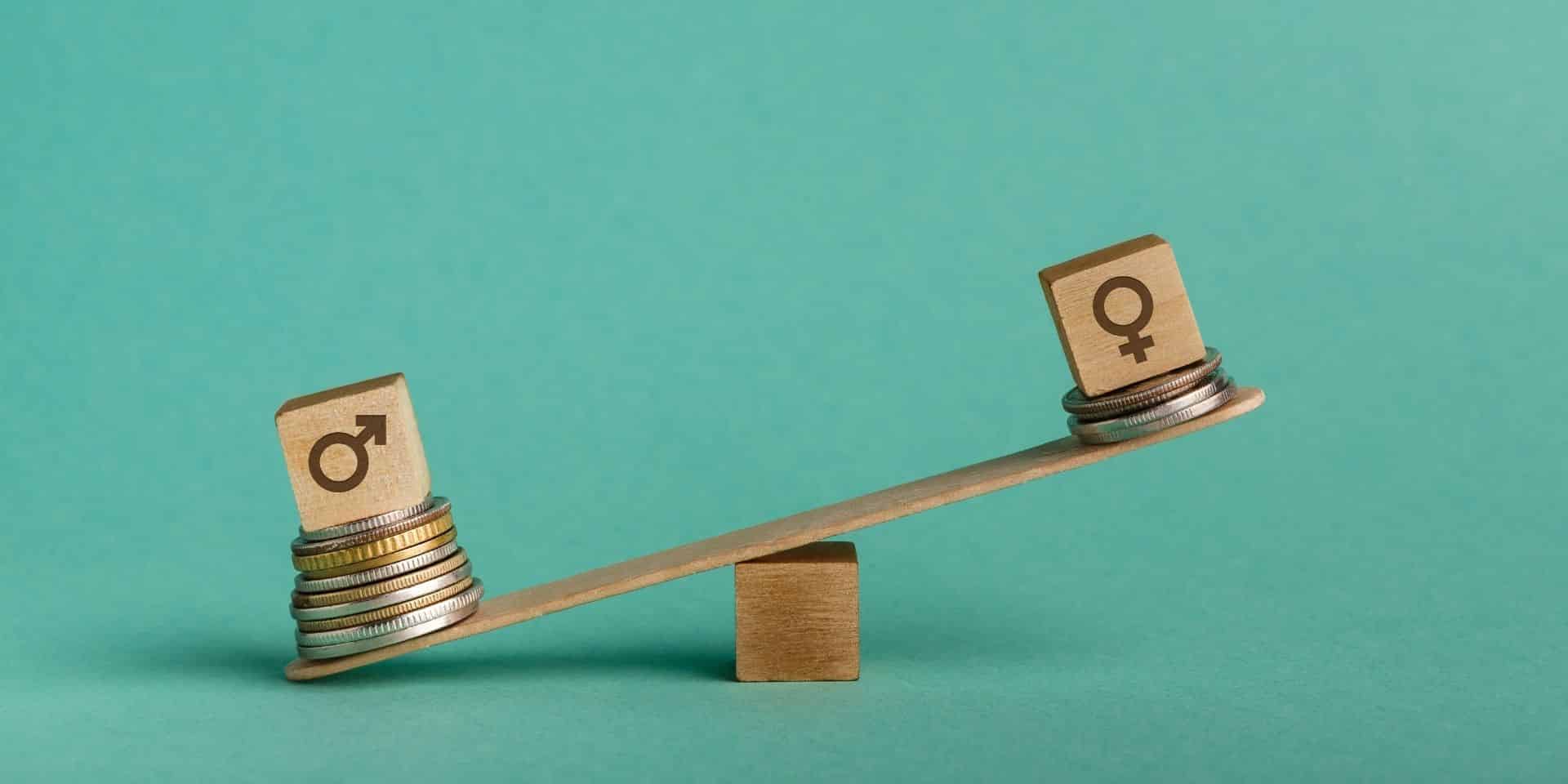I am a recruiter in the niche area of cyber security. But the injustices I see many women face in work environments like mine aren’t just prevalent in one area of the tech industry, writes Georgina Day, head of cyber security at Leap 29.
Indeed, the following injustices don’t discriminate, so much so that they’re arguably the top five injustices faced by women in technology.
I’d go so far as to say that these five injustices are the enemy of career progression for women in tech.
Top 5 Injustices Women in Tech Face
1. The Gender Bias Injustice
Gender bias runs through society, sub-consciously and consciously.
What is gender bias? Gender bias is individuals presuming that a specific gender is better at certain tasks, roles, or challenges than the others. In turn, this changes how different genders are perceived.
Gender bias is therefore also sometimes known as ‘gender perception.’
What is 'Stalled Progress'?
But why is this the case in 2024!?
Well, the persistence of gender inequality has, in fact, been called a phenomenon of “Stalled Progress.”
The psychology professor SD Gurieva, with others, coined this two-word term in a paper for St Petersburg State University.
Worth a read, the paper is entitled “Social Perceptions of Gender Differences and the Subjective Significance of the Gender Inequality Issue.”
Where is gender bias in tech recruitment most visible?
Through representing women in tech, specifically cyber security, I can tell you that gender bias, or gender perception — also known as Stalled Progress — is very much an aspect I see.
Gender bias most often comes up, potentially prominently, at the introduction stage of a candidate.
Perception is key with first impressions, and with the gender skills gap persisting, not a lot of hiring managers are expecting the interviewee to be a woman.
2. The Injustice of the Career Progression Blockage
A few years ago, my cyber security recruitment team and I found our candidate — a woman — her perfect position.
The position was “cyber security architect” and it was within a large scale fintech company.
We negotiated her a brilliant package, one which she very much deserved!
Finally, we made sure to follow her career progress ever since.
When it's female versus male, who gets tech leadership positions first?
At almost the same time, we placed a male in a very similar IT security architecture role, albeit for a different company — a technology start-up.
In the space of two years, the male has landed three promotions, and the woman? Nothing. No promotion whatsoever.
Positively, the female (and the male) candidate we placed seem happy.
It is hard to tell whether this absence of promotion for this particular woman in tech was due to gender.
Five (non-gender) factors affecting promotion as a woman in tech
After all, there are many varying factors with this promotion scenario, notably the:
- Sectors (the two employers are in different sectors).
- Employers’ budgets.
- Room within the employers’ organisations for career progression.
- Employers’ expansion plans.
- Location of the employers.
However, gender seems to be a relevant reference in this case, when comparing the gap between men and women in tech leadership positions.
In fact, it has been statistically proven that within technical hiring, only 86 women are promoted to manager for every 100 men (according to a McKinsey & Company study).
3. The Gender Pay Gap Injustice
The gender pay gap is a thing of the past.
Right?!
Well, you’d hope that it is in the UK, but that’s not quite the case for members of the technology workforce.

Not even a quarter of top-paying technology jobs are occupied by women
It is still painfully obvious to me that women in tech are paid much less relative to men in tech, and this injustice for female techies continues day in, day out.
In fact, official stats show that in the UK technology industry, women occupy only 23.5% of the top-paying jobs.
The silver lining is that, thankfully, this gap has narrowed in the past three years.
Gender pay gap reporting introduced in 2017 is part of the solution, surely
Flexible working, promoting female technologists into leadership positions, and explicitly acknowledging the gender pay gap being sizeable in the Computing/IT sector are all things that can assist in the gap closing even further.
The government’s introduction of the requirement for employers with a workforce of 250 and above to report their gender pay gap data is no bad thing either.
Gender pay gap reporting was enacted in the UK on April 6th 2017, which made affected employers publish their first set of figures by April 2018.
Meet the male client doing his bit to narrow the IT sector's gender pay gap
Today, I’ve seen a more positive side of this issue which may make women feel more optimistic about their future, despite the male domination.
Acutely aware of the lack of women in technology, I had a male client (representing a company) who effectively placed a premium bid on my candidate, to simply ensure he secured her within his operations, almost no matter what.
The male client knew about the other big gap also causing technology companies to suffer — the skills gap. He understood that the skill shortage made this individual woman in tech even more in demand.
Almost needless to say, both parties were, and still are very content with the placement! Ever since then, my candidate searches have become even more laser-like on women in tech than ever before.
4. The Injustice of Imposter Syndrome
The idea of ‘progress’ seems to look entirely different in the eyes of almost every woman in tech I know.
There’s ‘internal progress’ in an organisation, ‘external progress’ as a freelance IT consultant, and ‘skills progress’ through professional training and development.
Often with women in tech, 'progress' is in the eye of the beholder
And then outside of the tech workplace, there’s ‘health and fitness progress,’ and often, ‘work-life balance progress.’
What unifies a lot of the workplace-related ‘progresses’ is that they get wiped out very quickly by ‘Imposter Syndrome.’ If we could engage our rational thoughts in this ‘overwhelm’ of self-doubt, we’d see it’s totally unjustified.
Imposter syndrome is a very prominent issue for numerous individuals in today’s world.
But it’s a notorious value-killer, worth-killer, and progress-killer for women in tech.
That’s according to how many women in tech feel and let me know that they feel!
Only 10% of women progress to CEO-level
With as much as 90% of women suffering from imposter syndrome in the workplace, it’s got to be a part of why, in the US corporate sector, only 10.9% of women progress to CEO-level. There’s that word again, ‘progress!’
I’m a big believer in putting imposter syndrome on the backfoot from the very start.
Draw up a list of milestones ranging from the ‘reasonably likely to achieve’ to the ‘outright audacious.’
Should you reach the milestones, this resource will become a verifiable, recordable and potentially foundational ‘one in the eye’ of imposter syndrome.
Contrary to popular belief, imposter syndrome can make you determined to prove yourself, resolute to learn vast amounts and tirelessly committed to progressing up the ranks.
5. The Injustice of a Peer-Less Existence
The importance of building relationships with your peers is obvious in the workplace. It’s key to productivity, happiness and overall satisfaction in your tech role.
Peer recognition is also motivating! However building relationships with peers can become difficult when there is a gender gap.

Different generation, different gender = very possibly feeling ignored
Of course individuals can become friends no matter the gender. But if there is a group of nine male technical architects, the chances are the one woman tech wiz won’t want to join them for lunch!
Seven in ten employees say having friends at their job is the most crucial element to having a happy working life, and 40% of people across different generations and genders say they’re most likely to feel ignored.
Conclusion
The gender imbalance in the tech sector is narrowing, which is brilliant.
But it’s important to acknowledge, review and understand the issues, why they are still there and what can be done in practical terms to support women.
My advice? Don’t listen to any negative internal dialog that lets these top five injustices for female technologists persist.
And if you are reading this as a woman and working in technology, continue doing exactly what you’re doing; narrow that gap even further!

Georgina Day
As head of cyber security at Leap29, Georgi plays a key role in client and candidate management within the cyber security market. Through her years working within the tech space, covering IT support, cloud infrastructure and cyber security, Georgi has developed a strong understanding of the market and a wide network of qualified professionals. Georgi prides herself on finding candidates that not only have the technical knowledge and experience, but who drive business growth for her clients.







